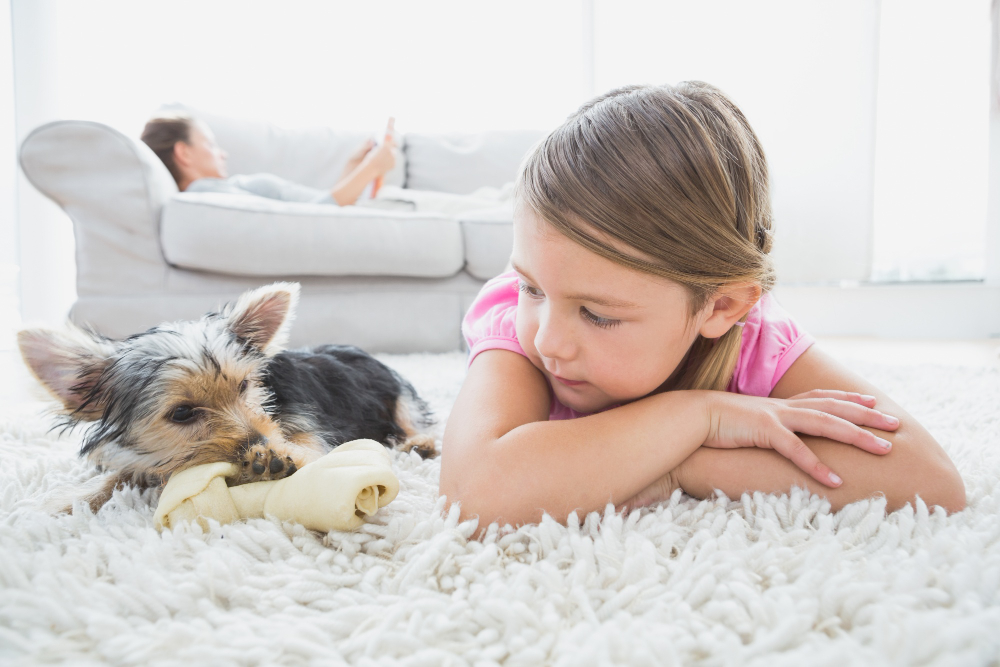How to Talk to Children About Pet Euthanasia

How to Talk to Children About Pet Euthanasia

The bond between a child and their pet often represents one of life's purest forms of love. When that beloved companion faces terminal illness or severe suffering, families must navigate one of childhood's most difficult conversations: explaining pet euthanasia. This sensitive discussion requires careful consideration, age-appropriate language, and gentle honesty.
Many parents struggle with when and how to involve children in end-of-life decisions for family pets. Should you shield them from the reality, or help them understand and participate in saying goodbye? The answer depends on your child's age, maturity level, and the specific circumstances surrounding your pet's condition.
This guide will help you approach this challenging conversation with compassion while providing your child with the tools they need to process grief in a healthy way.
Understanding Your Child's Developmental Stage
Children process death differently based on their cognitive and emotional development. Recognizing where your child stands can help shape your approach to this conversation.
Ages 3-5: Basic Concepts
Young children think concretely and may not fully grasp the permanence of death. They might ask when their pet will come back or express confusion about why their companion can't wake up. Use simple, honest language like "died" rather than euphemisms such as "put to sleep" or "went away," which can create confusion or fear around bedtime.
Ages 6-10: Growing Understanding
School-age children begin to understand that death is permanent but may still have magical thinking about their role in causing it. They need reassurance that nothing they did contributed to their pet's illness or death. These children benefit from factual explanations about illness and the decision to prevent suffering.
Ages 11+: Complex Processing
Older children and teenagers can understand the full scope of euthanasia as a compassionate choice. They may have strong opinions about the decision and should be included in family discussions when appropriate. They might also worry about other pets or family members dying.
Choosing the Right Time and Setting
Timing matters significantly when discussing pet euthanasia with children. Have this conversation when you won't be interrupted and when your child feels safe and comfortable. Choose a quiet space where they can express emotions freely.
Don't wait until the last moment to begin this discussion. If your veterinarian has indicated that euthanasia may be necessary, start preparing your child gradually. This approach prevents the shock of a sudden announcement and gives them time to process the information.
Consider your child's daily routine when planning this conversation. Avoid discussing it right before school, bedtime, or other significant events that might amplify their stress.
Explaining the Decision with Honesty
Children deserve honest, age-appropriate explanations about why euthanasia is being considered. Start by explaining your pet's condition in simple terms they can understand.
"Buddy is very sick, and his body isn't working the way it should. The medicine isn't helping him feel better anymore, and he's in pain." This approach acknowledges the reality while focusing on the pet's experience rather than medical complexities.
Explain that euthanasia is a way to help pets who are suffering stop feeling pain. Use phrases like "helping him die peacefully" or "making sure he doesn't hurt anymore" to frame it as an act of love and compassion.
Be prepared for difficult questions: "Why can't the doctor fix him?" or "Can't we try harder?" Answer honestly while emphasizing that this decision comes from love, not giving up.
Addressing Common Concerns and Questions
Children often have specific worries about euthanasia that parents should address directly.
Will it hurt? Reassure them that in home euthanasia is designed to be peaceful and painless. The veterinarian uses medicine that helps the pet fall into a deep sleep without any discomfort.
Is it my fault? Children sometimes blame themselves for their pet's illness. Clearly explain that nothing they did caused their pet's condition and that this decision isn't related to their behavior or care.
What happens to the body? Answer this question based on your family's plans and beliefs. Whether you choose burial, cremation, or another option, explain it in terms your child can understand.
Why can't we wait? Help them understand that waiting might mean more suffering for their beloved pet. Compare it to how they wouldn't want to stay sick and in pain.
Deciding Whether Children Should Be Present
The question of whether children should witness euthanasia requires careful consideration of multiple factors. Some children find comfort in being present for their pet's final moments, while others may be traumatized by the experience.
Consider your child's personality and previous experiences with death or medical situations. A child who becomes very anxious during routine veterinary visits might not cope well with being present during euthanasia.
Benefits of being present:
- Provides closure and a clear understanding of what happened
- Allows them to say goodbye in their own way
- Demonstrates that death can be peaceful
- Prevents imagination from creating worse scenarios
Potential drawbacks:
- May create lasting traumatic memories
- Could increase anxiety about death in general
- Might be overwhelming for very sensitive children
If you choose in home euthanasia in Reno, NV, the familiar environment may make it easier for children to participate if they wish. The comfort of home can reduce anxiety and provide a more peaceful setting for saying goodbye.
Creating Meaningful Goodbye Rituals
Regardless of whether your child is present during the procedure, creating opportunities for meaningful goodbyes can help with the grieving process.
Encourage your child to express their love through drawings, letters, or special activities with their pet. They might want to give their companion a favorite treat, take photos together, or simply spend quiet time cuddling.
Some families create memory boxes with the pet's favorite toys, collar, or photos. Others plant flowers or trees in the pet's memory. These tangible memorials can provide comfort long after the loss.
Consider involving your child in decisions about memorial services or remembrance activities. This participation can help them feel included and process their emotions constructively.
Supporting Your Child Through Grief
Grieving the loss of a pet is a normal, healthy process that shouldn't be rushed. Children may experience a range of emotions including sadness, anger, confusion, or even relief if their pet was suffering.
Allow your child to express these feelings without judgment. Some children cry openly, while others withdraw or act out behaviorally. All these responses are normal parts of grief.
Maintain routines as much as possible while being flexible about emotional needs. Your child might need extra comfort, time alone, or opportunities to talk about their pet.
Don't immediately suggest getting a new pet. While another animal companion might eventually bring joy, rushing into replacement can send the message that pets are easily replaceable and prevent proper grieving.
When to Seek Additional Support
Most children work through pet loss naturally with family support, but some situations may require professional help. Consider consulting a counselor if your child:
- Shows prolonged changes in eating or sleeping patterns
- Withdraws from activities they previously enjoyed
- Expresses persistent guilt or self-blame
- Demonstrates significant behavioral changes at school or home
- Has difficulty functioning in daily activities weeks after the loss
Many therapists specialize in helping children process grief and can provide valuable tools for both children and parents.
Moving Forward with Love and Memory
Losing a beloved pet is often a child's first encounter with death, making it a significant learning experience about life, love, and loss. How you handle this situation can shape your child's understanding of compassion, responsibility, and the natural cycle of life.
Remember that healing doesn't mean forgetting. Encourage your child to share favorite memories about their pet and keep their companion's memory alive through stories and photos.
This experience, though painful, can teach valuable lessons about unconditional love, empathy, and making difficult decisions out of compassion. Many children emerge from pet loss with greater emotional maturity and deeper appreciation for the relationships in their lives.
If you're considering in home euthanasia in Reno, NV, contact Rover Veterinary Care today for more information. Their compassionate team can help your family navigate this difficult decision while ensuring your beloved pet's comfort and dignity during their final moments.
